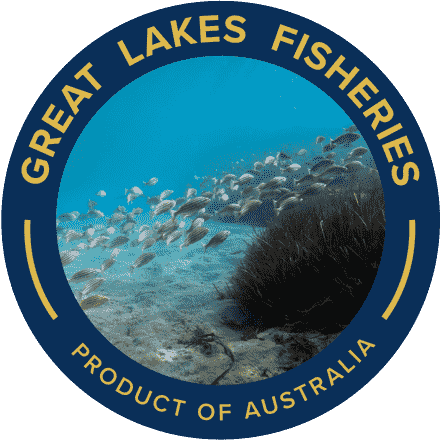
5 Australian Shellfish Species Worth Trying
Shellfish have been a cornerstone of Australian seafood eating as far back as historical observations stretch – all the way back to Indigenous communities collecting them by hand from rock platforms and the sandy and muddy intertidal shorelines of our coast. Fortunately, millenia of sustainable management means that these wonderful species are still caught today – with many harvest methods unchanged.
We have a huge range of shelled species available to us in Australia – some well-known, some not so much. We’ve whittled down the top 5 that we think you should try to get a solid education on the eating qualities of this seafood category, and provided some recipes for you too!
Periwinkle
Harvested by commercial divers and snorkellers in the southern third of the Australian coastline, these wonderful little shells are packed with flavour. They’re sweet, firm and briny – a long, complex flavour that can’t be replicated using anything else. Periwinkles are caught and sold live in the shell, ensuring top quality and as they’re harvested in clean oceanic waters, require no cleaning prior to cooking.
Steamed with garlic and herbs, or ginger and chilli, then picked and eaten out of the shell are two classic ways to eat these species. But for something really special, steam the Periwinkles open, remove the meat, finely dice and season then use this meat as the filling for homemade ravioli. Periwinkle ravioli with a Sea Urchin roe sauce is one of Australia’s best foraged dishes.
Commercial Scallop
Perfectly at home across southern Australia, in depths of 1-120m, the Commercial Scallop is one of Australia’s most abundant and important species of Scallop. The majority of this species comes from the Bass Strait fishery, between Tasmania and Victoria, before being sent up to Sydney. They are a mid-sized scallop – not as big as some Northern Hemisphere species, but far from the smallest. For Scallop lovers, it’s these mid-sized species that strike the best balance between sweetness, tenderness, and flavour.
It is important to note that Scallops are naturally ‘boom or bust’. They are filter feeders that depend on the ocean currents to provide nutrition, and the levels of nutrients being brought to the Scallop beds vary greatly from year to year. Because of this natural phenomenon the Scallop season is only opened once assessments have been made to ensure that the population is healthy and viable for harvest. What this means is that when they’re on, they’re on! The Tasmanian season, though subject to natural variations, runs from July to the end of December.
This is a natural bounty that’s wonderful to take advantage of. Whether they’re raw, seared, steamed, grilled in the half-shell, tossed through a pasta, cured in citrus – it’s hard to go wrong, particularly considering the price. When the season is at its peak, look for a price of under a dollar each for cleaned Scallops, roe on, in the half shell.
Sydney Cockle
During the Holocene Era, this species ranged from Western Australia, across the Great Australian Bight, all the way to New Zealand. To this day, the Sydney Cockle lives in abundance on the east coast of Australia, from northern Victoria to central Queensland. The majority of supply to Sydney Fish Market comes from fishers’ cooperatives at Wallis Lake and Bermagui. Preferring estuarine habitats such as tidal flats and seagrass beds, both accessible on foot, this species has been feeding Australians for tens of thousands of years.
Commercial harvest is still by hand and is both laborious and unreflected in the price, which can be as low at $10/kg up to approximately $15/kg. Considering the quality of meat inside the shell, this is low-priced! Two recommended methods are to steam them open and dress with garlic, ginger, and chilli. Another is to steam them open and toss through a simple pasta. Remember to go light on the flavourings so as not to overwhelm the natural qualities of these beautiful bivalves.
Bailer Shell
You’ve probably seen a Bailer Shell before. Supplied to Sydney Fish Market by Coffs Harbour Fishermen’s Cooperative, as well as a range of independent suppliers, they get their name from their old usage as a fisherman’s bucket, who used the empty shell to bail waiter out of the hull. When you saw it, it may have been turned into a lamp, or an ashtray, or turned to some other decorative purpose. The shells are indeed beautiful, with vivid patterns and colours in unique formations. The real beauty, however, is the meat inside. The main part is similar to abalone – sweet, firm, and lightly flavoured, and ideal for thin slicing and stir-frying, or a long braising. The best bit of the best bit is the meat that holds the animal together, somewhere between a razor clam, a scallop and a pipi. Delicious!
Turban Shell
Turban Shells have been eaten in Australia for tens of thousands of years, as evidenced by their presence in archaeological middens across South East Australian shores. Once you eat some, you’ll understand why. The flavour and texture is somewhere between abalone and mussels, with a versatility to be cooked either quickly, like being barbequed and served in their shells, or slowly, like being poached in stock for a couple of hours, teased out of the shell, thinly sliced, and served as the star of an Urchin risotto (with thanks to Ludovic Poyer!). They’re harvested by hand in some of the most nutrient rich sections of our coast, and this translates to a wonderfully clean, briny flavour. Turban Shells live in great abundance and are easy to harvest, though one at a time, and as such are much cheaper than they should be. Current retail prices for live Turban Shells work out to be about $2 each, roughly the same price as an orange.
